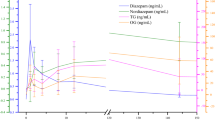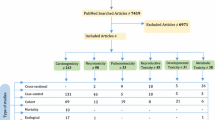Abstract
Aflatoxins are important mycotoxins produced by Aspergillus flavus and A. parasiticus, moulds which contaminate mainly grains and nuts, especially in hot and humid climate. Presence of aflatoxin B1 (AFB1), the most toxic one and a potent hepatocarcinogen, has been reported in food and feed in Bangladesh and raised concerns about mycotoxin exposure in the population. Biomonitoring provides the best approach to assess human exposure from various sources and by all routes. Part of the ingested AFB1 is converted in the body to aflatoxin M1 (AFM1), a metabolite that has served as biomarker of AFB1 exposure, as it is excreted in urine, and thus enables non-invasive sampling, a relevant aspect in field studies. This investigation measured the AFM1 concentration in urines collected from adult residents of a rural (n = 52) and an urban (n = 43) area in the Rajshahi district of Bangladesh. The urinary levels of AFM1 were determined by enzyme-linked immunosorbent assay. AFM1 was detected in 46 % of all urine samples at a range of 31–348 pg/mL. The median and mean concentration of AFM1 in urine was 61 and 80 ± 60 pg/mL, respectively. A significant difference (p < 0.05) was found at the mean level of AFM1 between the rural (99 ± 71 pg/mL) and urban (54 ± 15 pg/mL) cohort. Urinary AFM1 levels did not show significant correlations with food frequency data or age, gender and body mass index of the participants. Among them, the highest mean AFM1 level (101 ± 71 pg/mL) was observed in the 50–60 years age group. In conclusion, detection frequency and urinary AFM1 levels in the Bangladeshi adults support concerns regarding their dietary exposure to AFB1. These first data warrant further biomarker-based studies in children and in cohorts of other parts of the country.

Similar content being viewed by others
Notes
Percentage of positive samples based on the method detection limit of 30 pg/mL; detection frequency can vary depending on methods and detection limits.
Abbreviations
- AFB1 :
-
Aflatoxin B1
- AFM1 :
-
Aflatoxin M1
- ELISA:
-
Enzyme-linked immunosorbent assay
References
Ali N, Blaszkewicz M, Mohanto NC, Rahman M, Alim A, Hossain K, Degen GH (2015) First results on citrinin biomarkers in urines from rural and urban cohorts in Bangladesh. Mycotoxin Res 31:9–16
Blaszkewicz M, Liesenhoff-Henze K (2012) Creatinine in urine [Biomonitoring Methods, 2010]. The MAK Collection for Occupational Health and Safety. Wiley VCH, Weinheim, pp 169–184. doi:10.1002/3527600418.bi6027urie0012
CAST, Council for Agriculture Science and Technology (2003) Mycotoxins: Risks in plant, animal, and human systems. Task Force Report No. 139; CAST, Ames, IA
Cheng Z, Root M, Pan W, Chen J, Campbell TC (1997) Use of an improved method for analysis of urinary aflatoxin M1 in a survey of mainland China and Taiwan. Cancer Epidemiol Biomarkers Prev 6:523–529
Dawlatana M, Coker RD, Nagler MJ, Wild CP, Hassan MS, Blunden G (2002) The occurrence of mycotoxins in key commodities in Bangladesh: surveillance results from 1993 to 1995. J Nat Toxins 11:379–386
de Romero AC, Ferreira TRB, dos Santos Dias CT, Calori-Domingues MA, da Gloria EM (2010) Occurrence of AFM1 in urine samples of a Brazilian population and association with food consumption. Food Control 21:554–558
Degen GH (2011) Tools for investigating workplace related risks from mycotoxin exposure. World Mycotoxin J 4:315–327
Degen GH, Muñoz K, Hengstler JG (2013) Occurrence of mycotoxins in breast milk. In: Zibadi S, Watson RR, Preedy V (eds) Handbook of dietary and nutritional aspects of human breast milk. Wageningen Academic Publishers, pp 813–831, ISSN: 2212-375-X; doi: 10.3920/978-90-8686-764_48
Dohnal V, Wu Q, Kuča K (2014) Metabolism of aflatoxins: key enzymes and interindividual as well as interspecies differences. Arch Toxicol 88:1635–1644
[EC] European Commission (2006) Commission Regulation EC No. 1881/2006 of 19 December 2006 setting maximum levels for certain contaminants in foodstuffs. Off J Eur Union L 364:5–24
Ezekiel CN, Warth B, Ogara IM, Abia WA, Ezekiel VC, Atehnkeng J, Sulyok M, Turner PC, Tayo GO, Krska R, Bandyopadhyay R (2014) Mycotoxin exposure in rural residents in northern Nigeria: a pilot study using multi-urinary biomarkers. Environ Int 66:138–145
Gerding J, Cramer B, Humpf HU (2014) Determination of mycotoxin exposure in Germany using an LC-MS/MS multibiomarker approach. Mol Nutr Food Res 58:2358–2368
Gerding J, Ali N, Schwartzbord J, Cramer B, Brown DL, Degen GH, Humpf HU (2015) A comparative study of the human urinary mycotoxin excretion patterns in Bangladesh, Germany and Haiti using a rapid and sensitive LC-MS/MS approach. Mycotoxin Res. doi:10.1007/s12550-015-0223-9
Gourama H, Bullerman LB (1995) Aspergillus flavus and Aspergillus parasiticus, aflatoxigenic fungi of concern in foods and feed—a review. J Food Prot 58:1395–1404
Groopman JD, Egner PA, Schulze KJ, Wu LSF, Merrill R, Mehra S, Shamim AA, Ali H, Shaikh S, Gernand A (2014) Aflatoxin exposure during the first 1000 days of life in rural South Asia assessed by aflatoxin B1-lysine albumin biomarkers. Food Chem Toxicol 74:184–489
Huybrechts B, Martins JC, Debongnie Ph, Uhlig S, Callebaut A (2014) Fast and sensitive LC-MS/MS method measuring human mycotoxin exposure using biomarkers in urine. Arch Toxicol. doi:10.1007/s00204-014-1358-8
Islam GMR, Hoque MM (2013) Food safety regulation in Bangladesh, chemical hazard and some perception to overcome the dilemma. Intern Food Res J 20:47–58
Jager AV, Tohin FG, Souto PCMC, Privatti RT, Oliveira CAF (2014) Determination of urinary biomarkers for assessment of short-term human exposure to aflatoxins in São Paulo, Brazil. Toxins 6:1996–2007
Jolly P, Jiang Y, Ellis W, Awuah R, Nnedu O, Phillips T, Wang JS, Afriyie-Gyawu E, Tang L, Person S, Williams J, Jolly C (2006) Determinants of aflatoxin levels in Ghanaians: sociodemographic factors, knowledge of aflatoxin and food handling and consumption practices. Int J Hyg Environ Health 209:345–358
Jonsyn FE (2000) Seasonal variation in exposure frequency and concentration levels of aflatoxins and ochratoxins in urine samples of boys and girls. Mycopathologia 152:35–40
Kensler TW, Roebuck BD, Wogan GN, Groopman JD (2011) Aflatoxin: a 50-year odyssey of mechanistic and translational toxicology. Toxicol Sci 120(Suppl. 1):S28–S48
Lei Y, Fang L, Akash MSH, Rehman K, Liu Z, Shi W, Chen S (2013) Estimation of urinary concentration of aflatoxin M1 in Chinese pregnant women. J Food Sci 78:1835–1838
Leong YH, Latiff AA, Ahmad NI (2012) Exposure to aflatoxins and aflatoxin metabolites in human body fluids. A short review. Mycotoxin Res 28:79–87
Mitchell JN, Kumi J, Johnson NM, Dotse E, Marroquin-Cardona A, Wang JS, Jolly PE, Ankrah NA, Phillips TD (2013) Reduction in the urinary aflatoxin M1 biomarker as an early indicator of the efficiency of dietary interventions to reduce exposure to aflatoxins. Biomarkers 18:391–398
Mykkänen H, Zhu H, Salminen E, Juvonen RO, Ling W, Ma J, Polychronaki N, Kemiläinen H, Mykkänen O, Salminen S, El-Nezami H (2005) Fecal and urinary excretion of aflatoxin B1 metabolites (AFQ1, AFM1 and AFB-N7-guanine) in young Chinese males. Int J Cancer 115:879–884
Neal GE, Eaton DL, Judah DJ, Verma A (1998) Metabolism and toxicity of aflatoxins M1 and B1 in human-derived in vitro systems. Toxicol Appl Pharmacol 151:152–158
Nguyen MT, Tozlovanu M, Tran TL, Pfohl-Leszkowicz A (2007) Occurrence of aflatoxin B1, citrinin and ochratoxin A in five provinces of the central region of Vietnam. Food Chem 105:42–47
Ostry V, Malir F, Roubal T, Skarkova J, Ruprich J, Cerna M, Creppy EE (2005) Monitoring of mycotoxin biomarkers in the Czech Republic. Mycotoxin Res 21:49–52
Polychronaki N, Wild CP, Mykkänen H, Amra H, Abdel-Wahhab M, Sylla A, Diallo M, El-Nezami H, Turner PC (2008) Urinary biomarkers of aflatoxin exposure in young children from Egypt and Guinea. Food Chem Toxicol 46:519–526
Qian GS, Ross RK, Yu MC, Yuan JM, Gao YT, Henderson BE, Wogan GN, Groopman JD (1994) A follow-up study of urinary markers of aflatoxin exposure and liver cancer risk in Shanghai, People’s Republic of China. Cancer Epidemiol Biomarkers Prev 3:3–10
Reddy KRN, Reddy CS, Muralidharan K (2009) Detection of Aspergillus spp. and aflatoxin B1 in rice in India. Food Microbiol 26:27–31
Roy M, Harris J, Afreen S, Deak E, Gade L, Balajee SA, Park B, Chiller T, Luby S (2013) Aflatoxin contamination in food commodities in Bangladesh. Food Addit Contam Part B Surveill 6:17–23. doi:10.1080/19393210.2012.720617
Sabran MR, Jamaluddin R, Abdul Mutalib MS (2012a) Screening of aflatoxin M1, a metabolite of aflatoxin B1 in human urine samples in Malaysia: a preliminary study. Food Control 28:55–58
Sabran MR, Jamaluddin R, Abdul Mutalib MS, Abdul Rahman NA (2012b) Association between aflatoxin M1 excreted in human urine with the consumption of milk and dairy products. Bull Environ Contam Toxicol 89:1115–1119
Solfrizzo M, Gambacorta L, Visconti A (2014) Assessment of multi-mycotoxin exposure in southern Italy by urinary multi-biomarker determination. Toxins 6:523–538
Sun Z, Lu P, Gail MH, Pee D, Zhang Q, Ming L, Wang J, Wu Y, Liu G, Wu Y, Zhu Y (1999) Increased risk of hepatocellular carcinoma in male hepatitis B surface antigen carriers with chronic hepatitis who have detectable urinary aflatoxin metabolite M1. Hepatology 30:379–383
Tang L, Tang M, Xu L, Luo H, Huang T, Yu J, Zhang L, Gao W, Cox SB, Wang JS (2008) Modulation of aflatoxin biomarkers in human blood and urine by green tea polyphenols intervention. Carcinogenesis 29:411–417
Turner PC (2013) The molecular epidemiology of chronic aflatoxin driven impaired child growth. Scientifica. doi:10.1155/2013/152879
Turner PC, Flannery B, Isitt C, Ali M, Pestka J (2012) The role of biomarkers in evaluating human health concerns from fungal contaminants. Nutr Res Rev 25:162–175
van Egmond HP, Schothorst RC, Jonker MA (2007) Regulations relating to mycotoxins in food: perspectives in a global and European context. Anal Bioanal Chem 389:147–157
Wild CP, Gong YY (2010) Mycotoxins and human disease: a largely ignored global health issue. Carcinogenesis 31:71–82
Wild CP, Turner PC (2002) The toxicology of aflatoxins as a basis for public health decisions. Mutagenesis 17:471–481
Williams JH, Phillips TD, Jolly PE, Stiles JK, Jolly CM, Aggarwal D (2004) Human aflatoxicosis in developing countries: a review of toxicology, exposure, potential health consequences, and interventions. Am J Clin Nutr 80:1106–1122
Wogan GN, Kensler TW, Groopman JD (2012) Present and future directions of translational research on aflatoxin and hepatocellular carcinoma: a review. Food Addit Contam Part A Chem Anal Control Expo Risk Assess 29:249–257
Yogendrarajah P, Jacxsens L, De Saeger S (2014) Co-occurrence of multiple mycotoxins in dry chilli (Capsicum annum L.) samples from the markets of Sri Lanka and Belgium. Food Control 46:26–34
Zhu JQ, Zhang LS, Hu X, Xiao Y, Chen JS, Xu YC, Fremy J, Chu FS (1987) Correlation of dietary aflatoxin B1 levels with excretion of aflatoxin M1 in human urine. Cancer Res 47:1848–1852
Acknowledgments
The authors want to thank Gabriele Baumhoer for excellent technical assistance. This work was supported by a DAAD scholarship to N.A. and a Grant from the Brigitte und Wolfram Gedek-Stiftung to G.H.D.
Author information
Authors and Affiliations
Corresponding author
Ethics declarations
Conflict of interest
None of the authors have any conflict of interest to declare.
Rights and permissions
About this article
Cite this article
Ali, N., Hossain, K., Blaszkewicz, M. et al. Occurrence of aflatoxin M1 in urines from rural and urban adult cohorts in Bangladesh. Arch Toxicol 90, 1749–1755 (2016). https://doi.org/10.1007/s00204-015-1601-y
Received:
Accepted:
Published:
Issue Date:
DOI: https://doi.org/10.1007/s00204-015-1601-y




